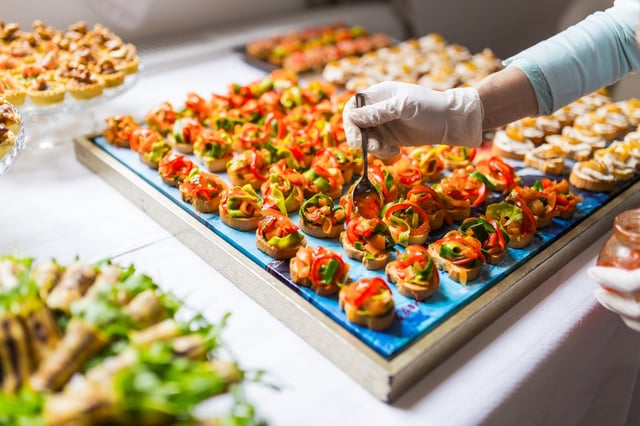 There’s probably no better way to get customers interested in your food product than giving them a live demo. They not only get to look, taste, and smell your product, but they get to experience your brand and the story behind everything.
There’s probably no better way to get customers interested in your food product than giving them a live demo. They not only get to look, taste, and smell your product, but they get to experience your brand and the story behind everything.
With that being said, when you do demo your food product at a live event, you want to make sure it’s a memorable experience for consumers. Not only do you need to showcase your product in an effective manner, but you need to get creative in order to stand out in the eyes of potential customers.
By knowing how to demo your food product, you’ll be able to engage people on a meaningful level and increase sales over the long haul. Here’s how to stand out when demoing your food product at your next live event.
1. Pick the Right Event and Location
The first step in laying the foundation for a great demo is to choose the right event location. You’ll want to think about the audience you’re trying to attract with your product, and where they’re most likely to be found. While a BBQ festival might be an exciting event with a ton of people, it’s probably not the best event if your product is low-calorie, vegan, organic, and/or and overall health conscious product. In that case, you’ll want to seek out a vegetarian or local farms festival.
Apply this same train of thought to choosing locations for in-store demos. Is your audience likely to be found at a mainstream supermarket, big box store or organic market like Whole Foods? Answering this question will give you practical insight when it comes to picking the best location or event to demo.
2. Determine Who's Going to Host Your Demo
Whoever is hosting the demo will be the face of your business for that day, so choose wisely. As the business owner, you need to decide if you’re going to be the one conducting the demo, or if you need to consider hiring outside help. The host needs to be dynamic and outgoing, so if you don’t feel confident that you possess those traits it might be wise to pick someone else. Also consider the fact that the host needs to be educated about the product and able to field questions should they arise. Overall, whoever the host is, they need to be energetic and create a memorable experience that potential customers will take home with them.
3. Create an Engaging Display
Your display space is a key part of your branding, and is not something to be overlooked. This means branding your space at the event which creates an atmosphere that patrons will want to check out. You’ll of course want to include signage of all sorts, but also consider things like feather banners that will rise above the crowd and help you to stand out. You may also want to include collateral informational materials on your display table. Pamphlets about your product and company or recipe cards are small but effective ways of making your display more engaging and giving people something to take home with them.
4. Capture Information On-Site
This is where the sales and lead generation part of your demo kicks in. If people are interested in your product, make sure that they sign up for your newsletter or allow them to like/follow you on Facebook, Twitter, and any other social platform you utilize. The main thing is that you use these demos and events as opportunities to capture leads so you can continue to marketing to them over time. Coupons, for example, are a great way to capture customer info at an event. You can even allow them to use it on an item right then and there by having them sign up for a newsletter or put their name on a mailing list to obtain the coupon. Using this technique, you’ll be able to continually market and upsell them in the future.
Now that you know how to create successful food demos, you’ll be able to pick the right location and get the most out of this powerful (and fun) way of marketing your food product to consumers.





